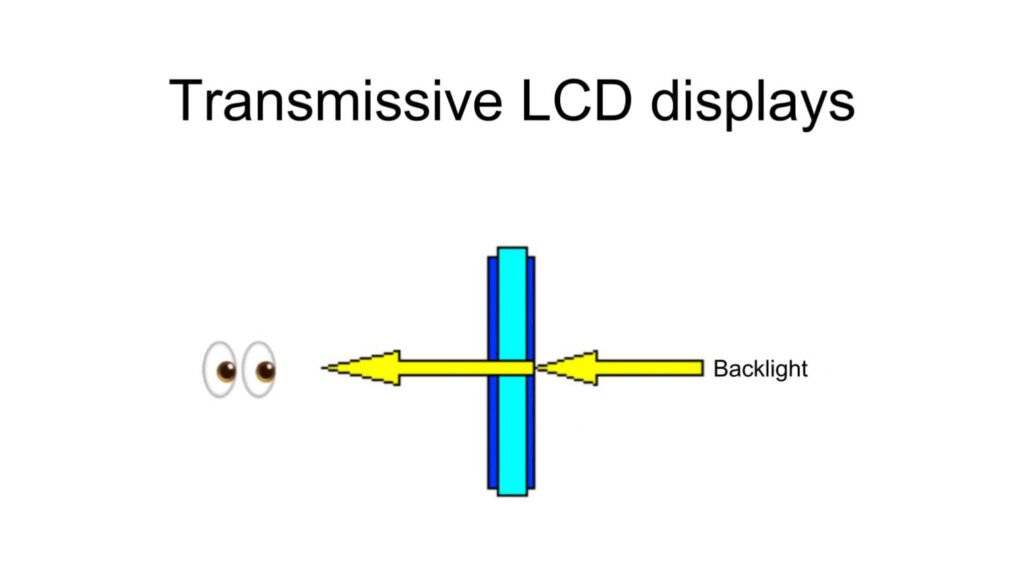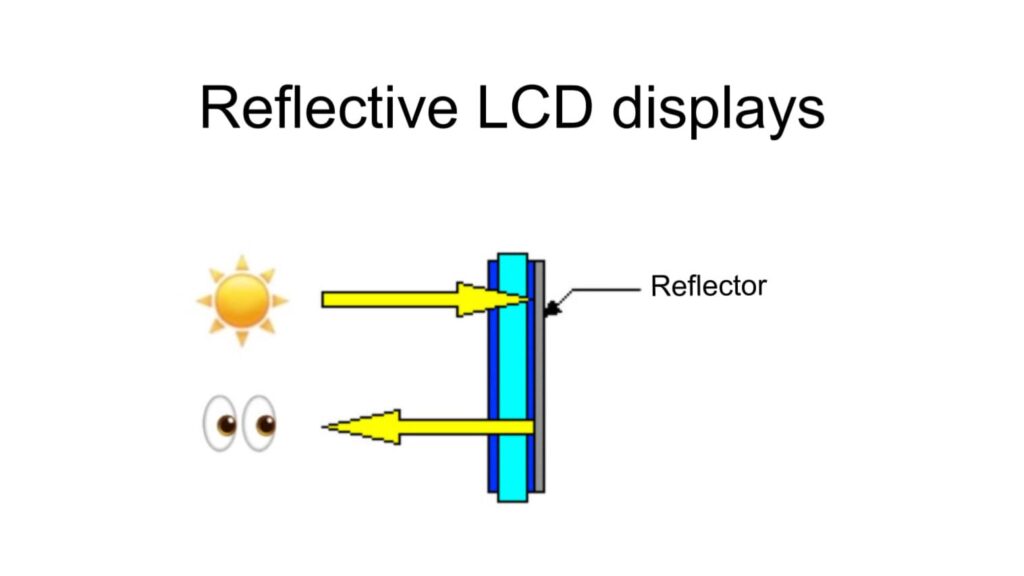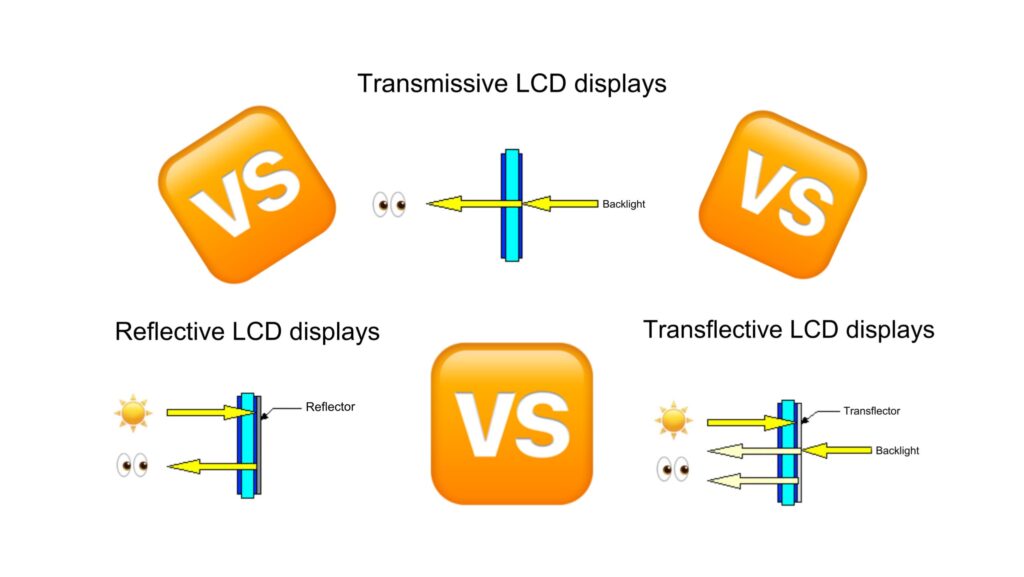Ever get the feeling you’re lost in a jungle of tech jargon? Yeah, me too, pal. But fear not, today we’re gonna navigate the mysterious world of LCD displays together.
Let’s dive straight into the heart of the matter: Transmissive LCDs. What’s the deal with them, right?
Transmissive LCD displays
Transmissive LCDs operate by channeling light from a source located at the back of the display glass, passing it through the LCD layer to light up the pixels on the front, thus generating the desired image. The utility of this approach is apparent in applications where a high-resolution, quality image or video display is paramount. Consequently, the use of transmissive LCDs has been widespread in devices requiring the ability to display intricate visual content with remarkable clarity, such as Thin-Film-Transistor (TFT) displays.
1. Advantages of Transmissive LCDs
- Brightness: They’ve got that inner glow, powered by the light source behind them. It’s like being at a rock concert, indoors.
- High Contrast Ratio: The whole light behind the screen thing? Makes for super crispy visuals.
2. Disadvantages of Transmissive LCDs
- Energy Hogs: With great light, comes great power consumption. These screens love their juice.
- Not Sun-Friendly: Their performance under direct sunlight? Let’s just say, it’s a bit “vampire-ish”.

3. Application of Transmissive LCDs
Transmissive LCD displays are integral to our tech-savvy world. They bring our smartphones, tablets, computer monitors, and TVs to life with vivid imagery. They also boost the clarity of digital cameras, camcorders, and in-car displays.
Stepping beyond personal gadgets, they’re key in in-flight entertainment systems, medical equipment, kiosks, and point-of-sale terminals. Even character LCDs and graphic LCDs leverage transmissive modes, giving a pop to bright light pixels on darker backgrounds.
Reflective LCD displays
Reflective LCD displays, unlike their transmissive counterparts, play a different game entirely. Instead of using an internal backlight source, these displays reflect surrounding light, causing their pixels to spring to life. Imagine them as mirrors, capturing and reflecting the environment’s light to create a vivid display.
1. Advantages of Reflective LCDs
- Power Efficient: These screens are the equivalent of a Tesla in the LCD world.
- Sun Lovers: No vampirism here. Reflective LCDs thrive in direct sunlight.
2. Disadvantages of Reflective LCDs
- Ambient Light Reliant: Low light situations? Not their best moments.

3. Application of Reflective LCDs
Reflective LCDs are ideal for outdoor applications and power-conscious handheld devices. You’ll find them soaking up the sun in GPS devices and conserving energy in e-readers, camera viewfinders, and digital watches.
They’re used in COG LCDs, graphic LCDs and character LCDs with positive display types. Simply put, they enhance visibility in sunlight and keep power usage low.
Transflective LCD displays
Transflective LCD displays excel in versatility, adeptly merging transmissive and reflective traits. They use both backlighting and ambient light reflection for pixel illumination. This allows a display that’s adaptable, skillful in both light emission and reflection.
1. Advantages of Transflective LCDs
- Best of Both Worlds: These screens can both transmit and reflect light.
- Adaptive: They shift their display based on lighting conditions.
2. Disadvantages of Transflective LCDs
- Jack of All Trades, Master of None: They’re good at many things, but not the best at any.
- Pricey: The complexity in production makes ’em cost a bit more.

3. Application of Transflective LCDs
Transflective LCDs excel in environments requiring adaptable visibility. You’ll find them in industrial and medical equipment and in fields like marine, military, and aviation. These displays adjust beautifully, ensuring clear viewing in bright sunshine or low-light conditions. Simply put, they’re the go-to for versatile, all-light visibility.
So, Transmissive, Reflective, or Transflective: Which One’s The Champ?
The answer? It’s complicated. It’s a bit like asking which superhero is the best. Depends on the scenario, right? Every type of LCD has its pros and cons. Your specific needs and budget are the real deciding factors here.
Here at Lcdeer, I believe in choices. Because I understand that you need quality, versatility, and value for your hard-earned money. So, my advice? Understand your needs, and the right LCD will present itself. That’s a promise.

Conclusion
So there you have it, folks. The transmissive vs reflective vs transflective LCDs showdown. It’s a bit like a three-ring circus, with each performer showcasing its own unique tricks.
Transmissive LCDs, with their bright, high-contrast displays, are the daredevils on the high wire, perfect for indoor usage. Reflective LCDs, on the other hand, are those strongmen basking in the spotlight, sun-lovers perfect for outdoor scenarios. And let’s not forget the versatile jugglers, the transflective LCDs, smoothly adapting to both indoor and outdoor conditions.
But remember, just like in a circus, there’s no singular “best” performer. It’s all about the entire show, the combination of acts that makes it spectacular. In the same way, choosing between transmissive, reflective, and transflective LCDs isn’t about finding a universally best option. It’s about identifying the LCD that’s the best fit for your specific needs and scenario.
So whether you’re an engineer on the hunt for the perfect LCD for your next invention, or a manufacturer looking for the ideal LCD to incorporate into your product line, remember this: there’s an LCD out there that’s just perfect for you.
And here at Lcdeer, I’m always ready to guide you in finding it. So come on, let’s continue exploring this fantastic, ever-evolving world of LCDs together!
